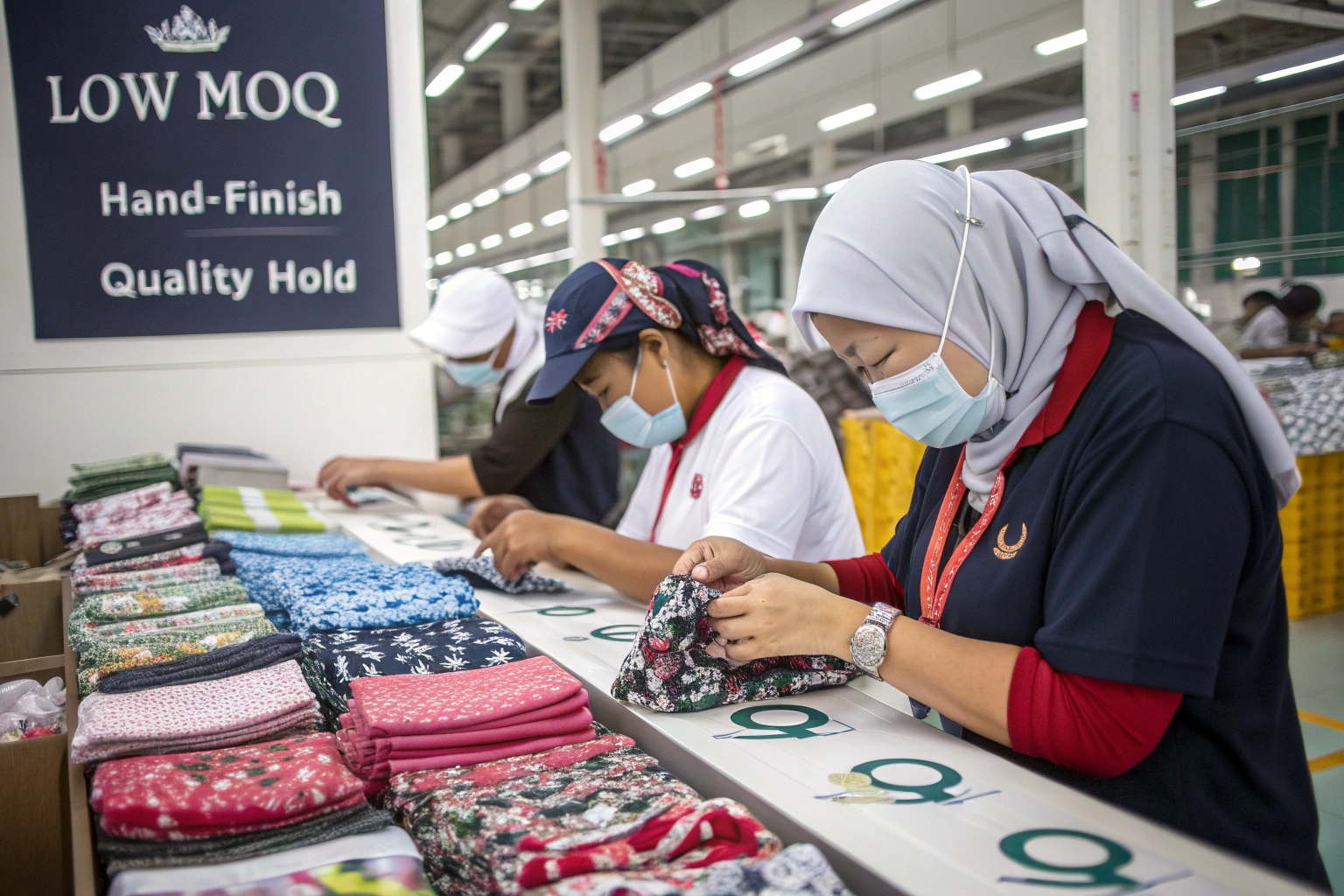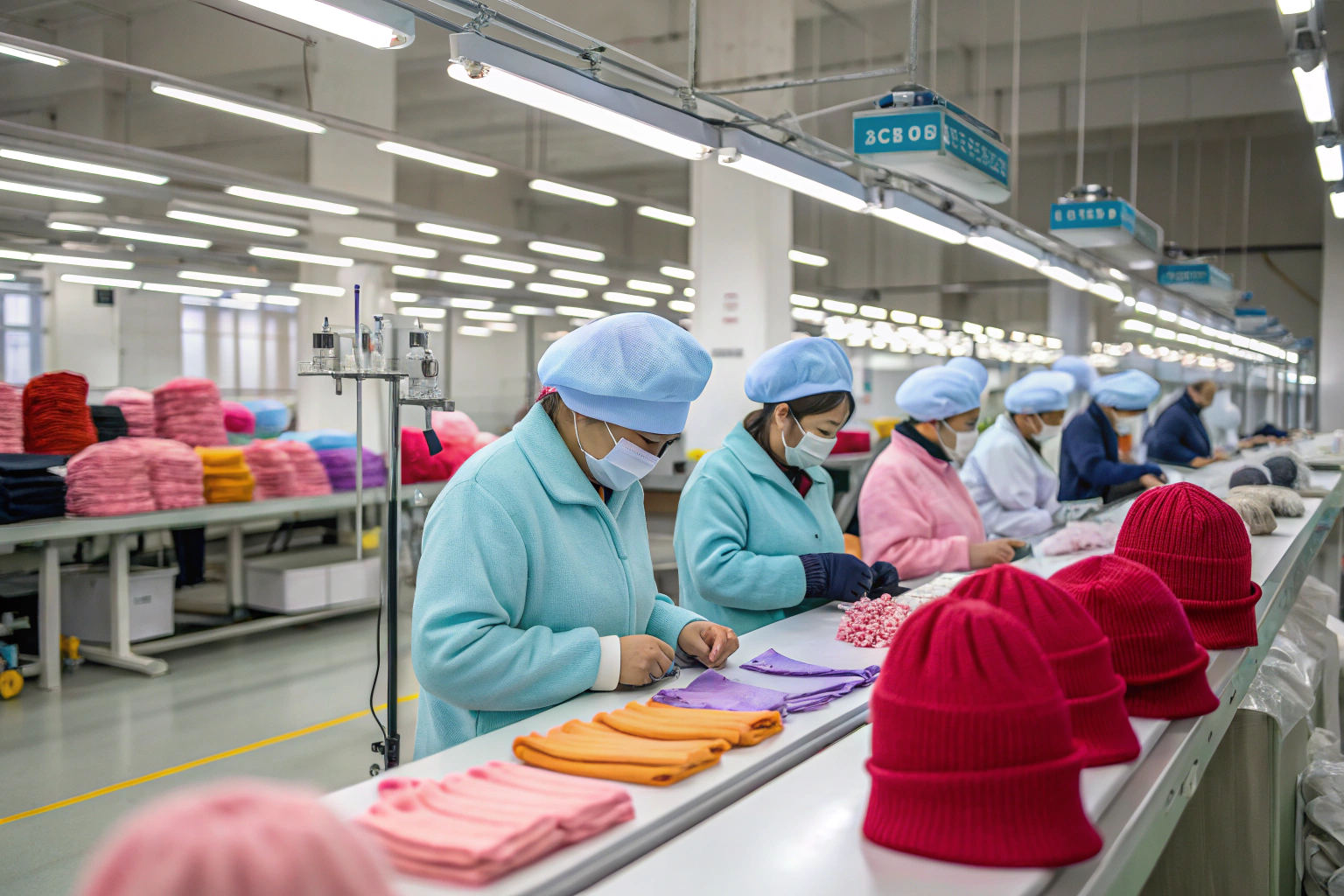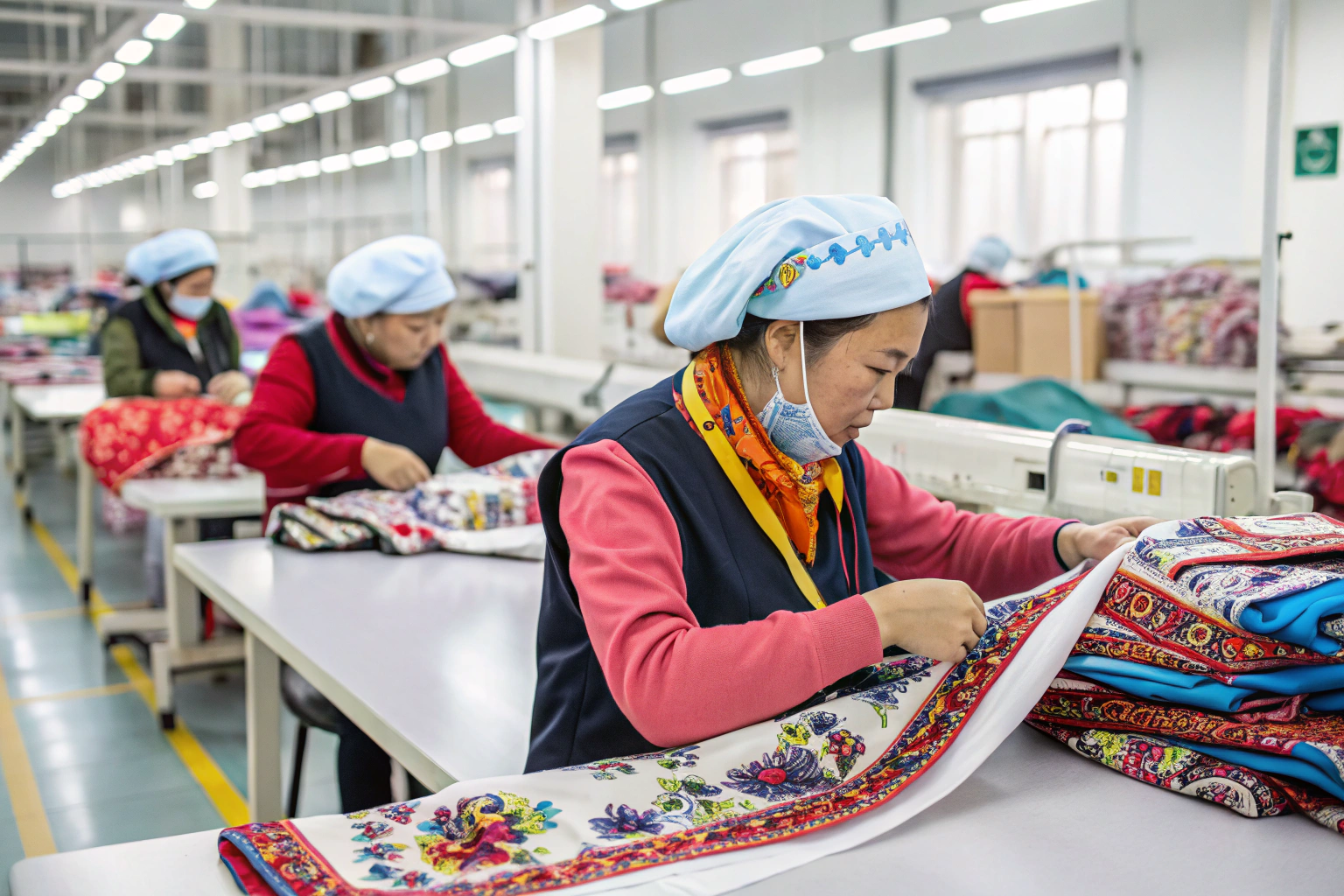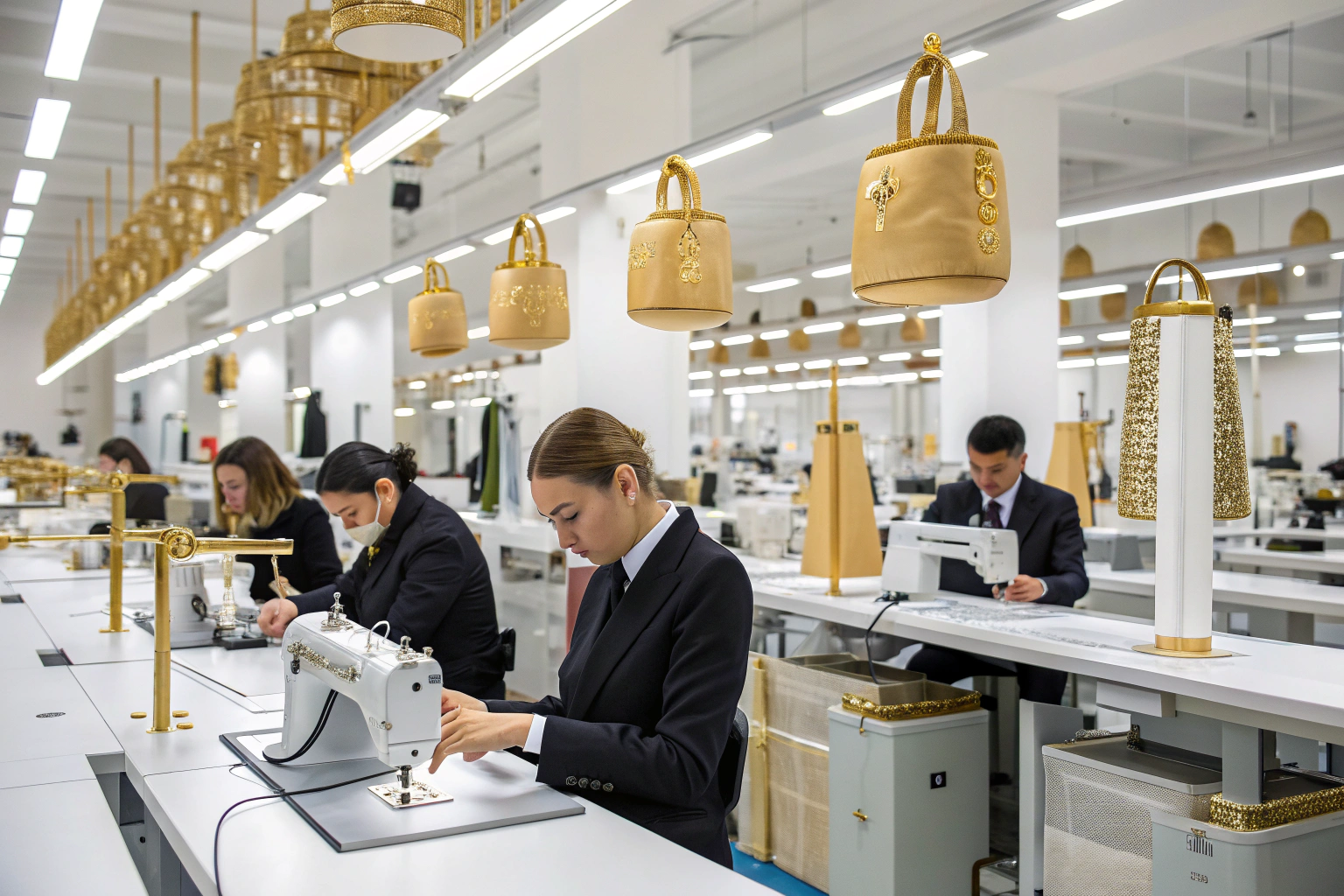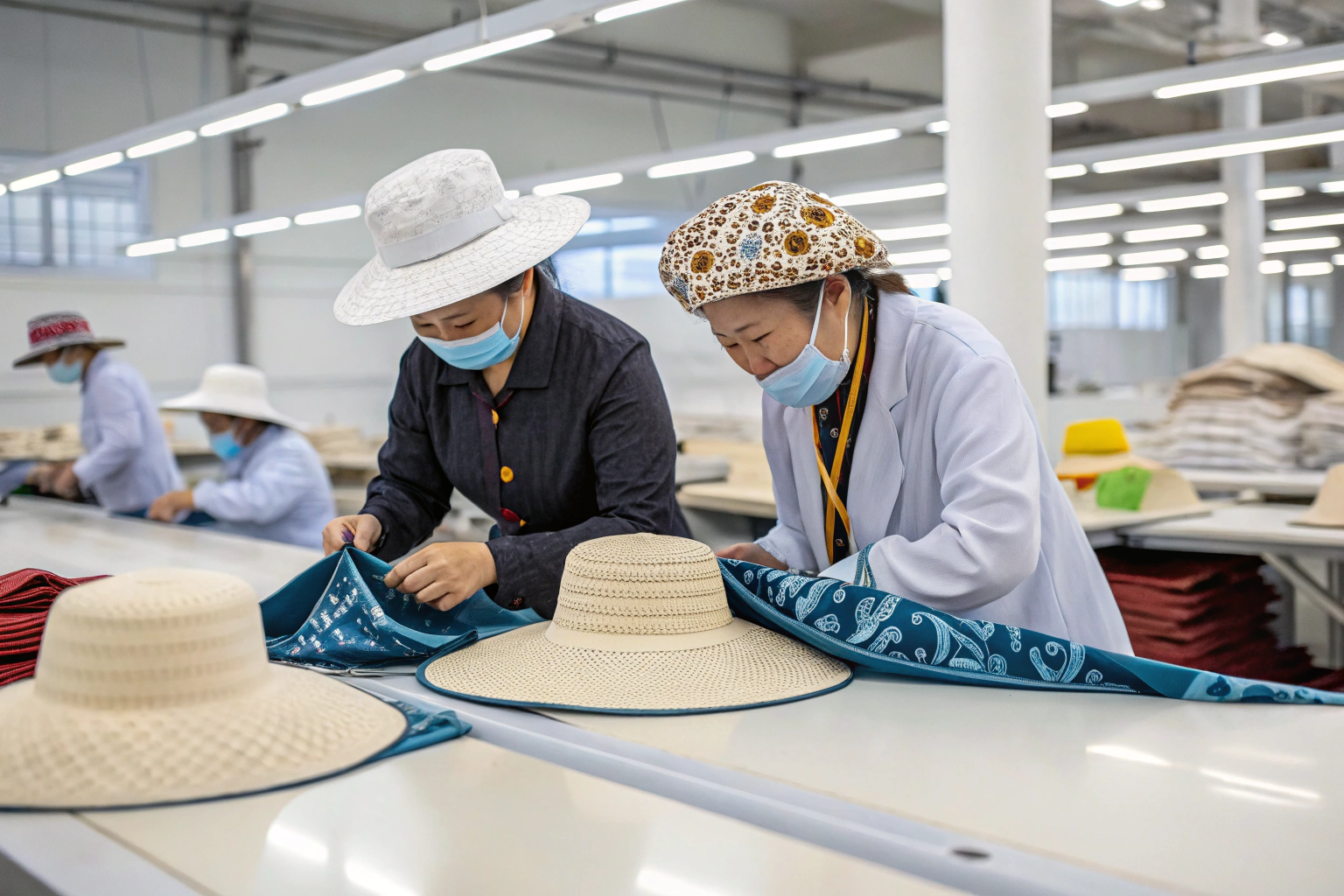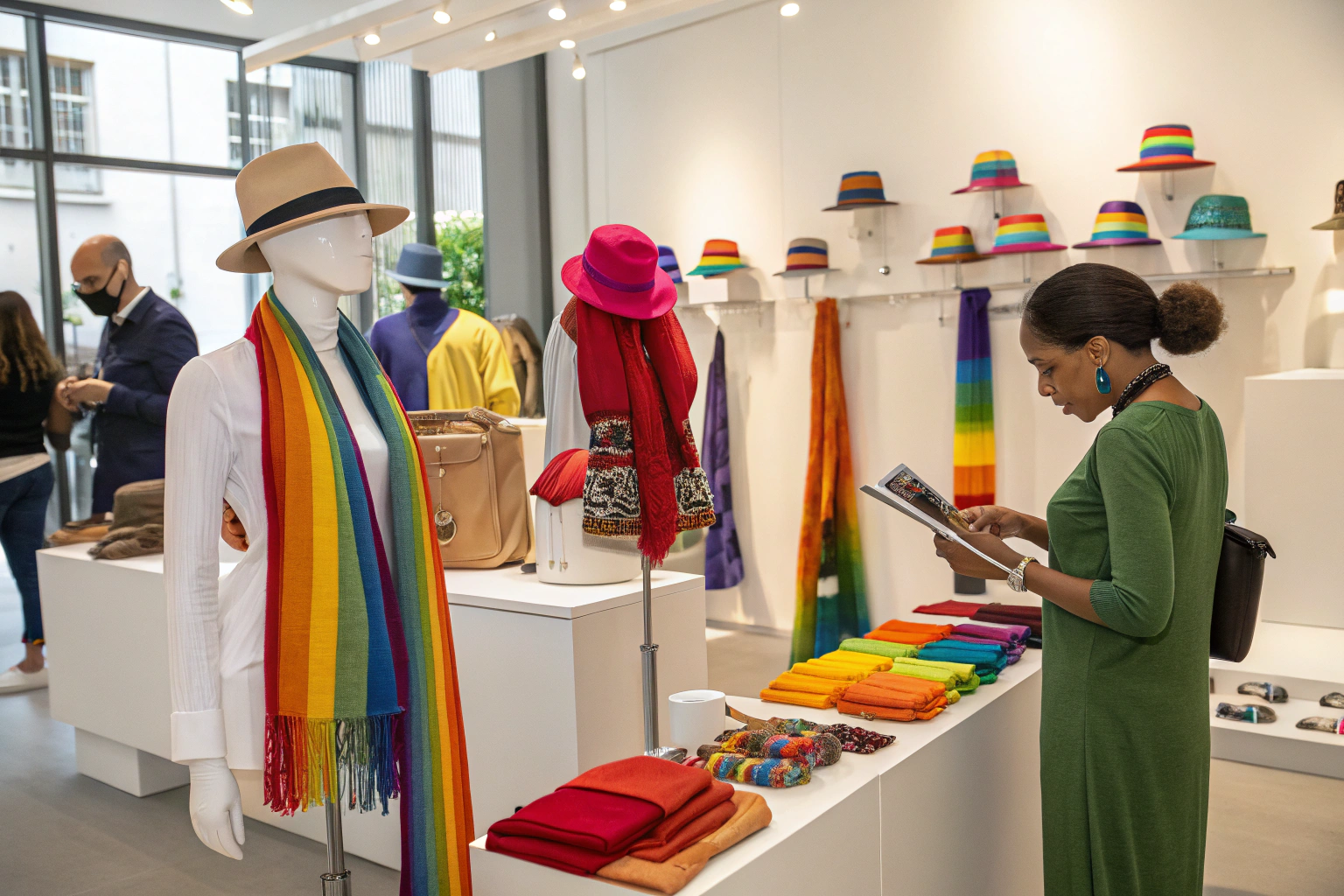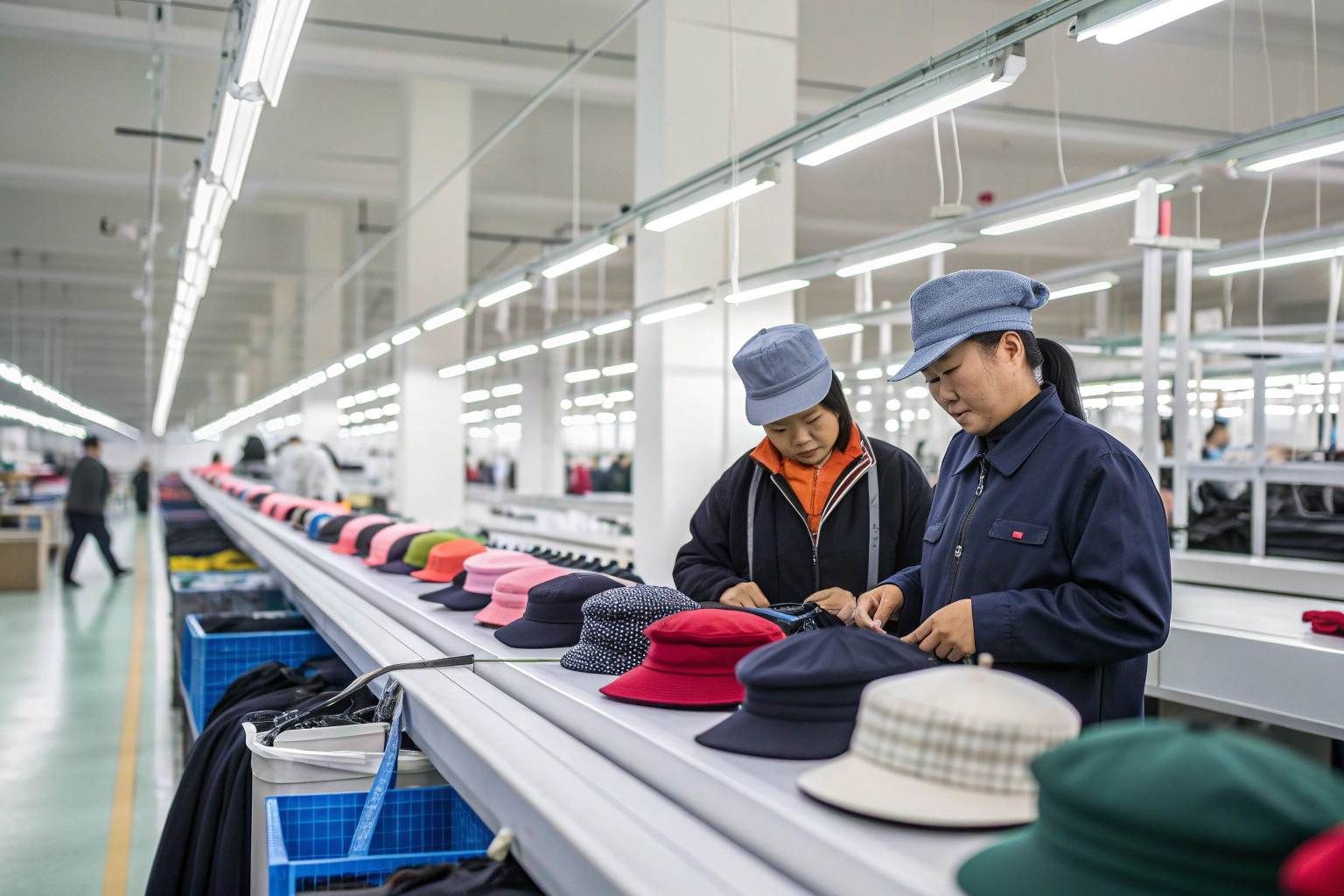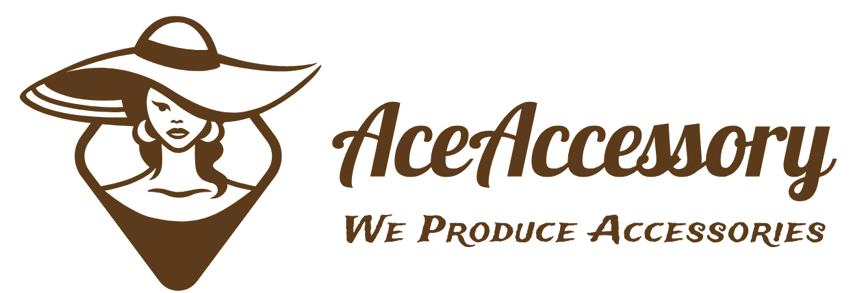Boutique brands don’t always need thousands of units. Sometimes, 100 personalized headbands or 300 branded scarves are all it takes to launch. But many factories in China still ask for massive minimums—unless you know where to look.
Chinese factories handle small batch accessory orders by streamlining sample-to-production workflows, offering flexible MOQs, using semi-automated processes, and sharing material stock across clients to keep costs low.
At AceAccessory, we work with boutique brands every week, helping them start small without compromising on quality, customization, or lead time. Here’s how we—and factories like ours—make it happen.
Minimum Order Quantities for Boutique Accessories
Small brands often hesitate to reach out to manufacturers, assuming they can’t meet the order volume. But modern Chinese factories have adapted to global demand shifts.
For boutique accessories, Chinese factories typically offer MOQs starting from 100 to 500 units per style, depending on material, complexity, and level of customization required.
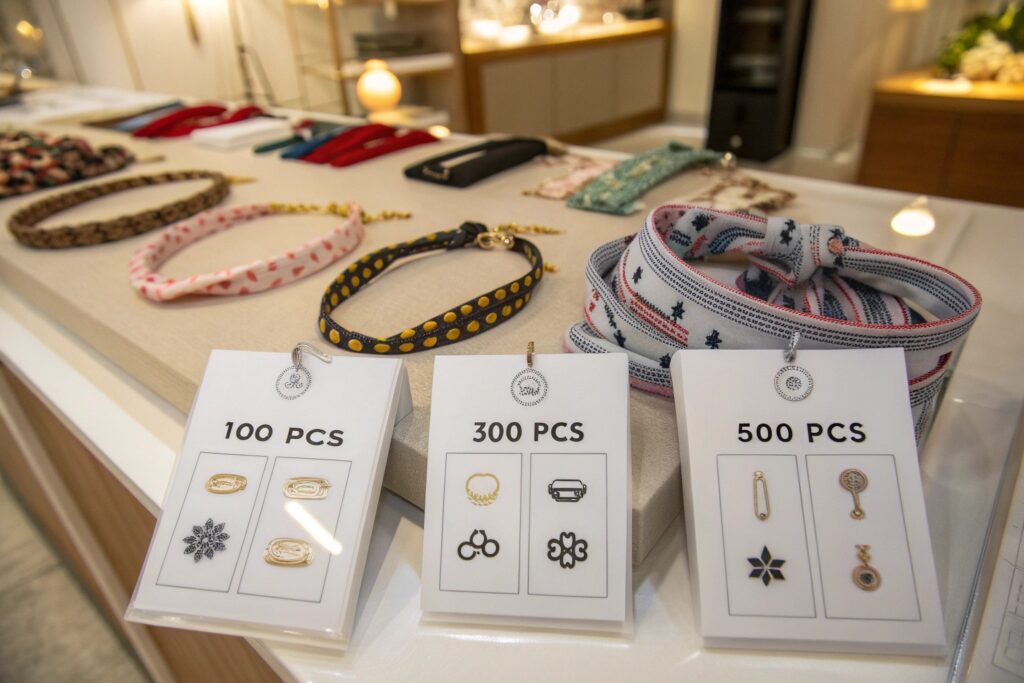
Typical MOQ Ranges by Product Type
| Product Type | Standard MOQ (pcs/style) | Notes |
|---|---|---|
| Hair Clips | 300–500 | Molded or resin styles need higher volume |
| Headbands | 200–300 | Fabric or padded bands allow more flexibility |
| Belts | 300–600 | Due to cutting and buckle procurement |
| Scarves | 100–300 | Depends on fabric choice (stock vs dyed) |
| Gloves | 200–500 | Lined gloves may require full material rolls |
AceAccessory offers MOQ customization tiers, such as:
- 100 pcs/style with generic packaging
- 300 pcs/style with custom hangtags
- 500 pcs/style with full-color logo printing
For startup brands, this allows product testing without risking overstock.
How Factories Manage Low-Volume Production Runs
Low volumes don’t mean low complexity. In fact, smaller orders often require more flexibility. Factories that succeed here do things differently.
Factories manage small batch orders by using shared production lines, grouping similar orders, adjusting labor scheduling, and keeping raw material stock for quick runs.
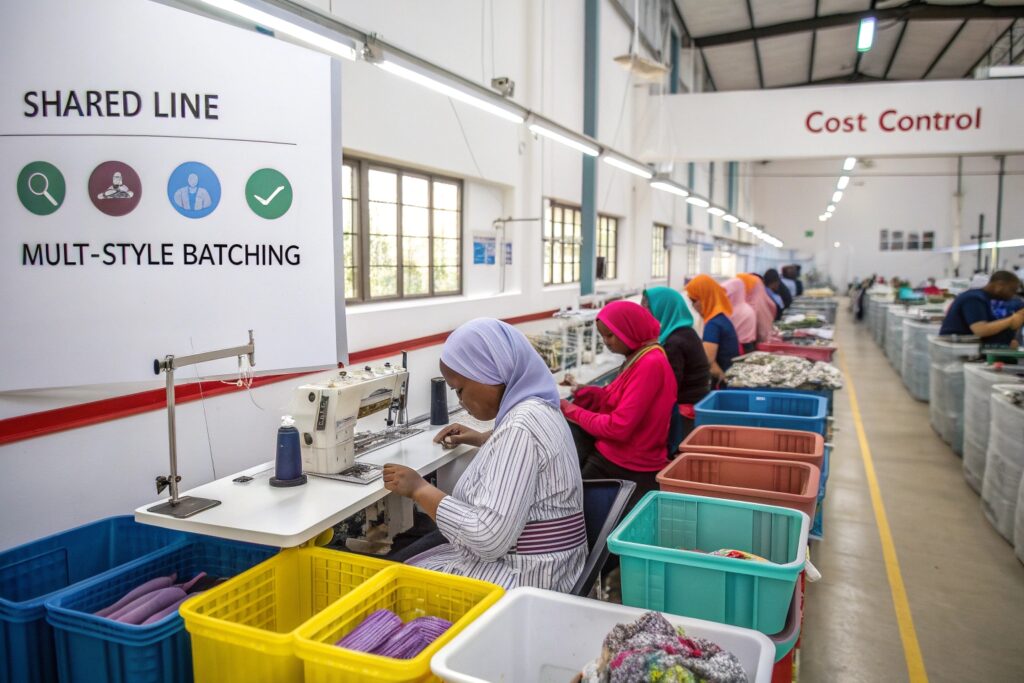
Strategies Factories Use to Support Small Orders
| Strategy | Benefit to Boutique Buyers |
|---|---|
| Shared Line Scheduling | Reduces wait time for short-run projects |
| Pre-stocked Core Materials | Speeds up development (e.g., black PU, satin ribbon) |
| Modular Assembly Processes | Easily adaptable to design variations |
| Sample-First Pipeline | Faster turnaround for new SKUs |
| Mixed Container Shipping | Saves freight cost for partial orders |
At AceAccessory, we batch together orders from multiple boutiques needing:
- Similar styles (e.g., velvet scrunchies)
- Matching color themes
- Standard backing cards or retail packaging formats
This grouping method helps us hit lower MOQs per brand without raising the unit price. It also reduces waste, which is a priority for many of our eco-conscious clients.
Custom Design Support for Small Batch Buyers
One of the biggest challenges for boutique brands is getting their designs produced faithfully in small quantities. We understand—because we were once a small brand too.
Factories that cater to small batch buyers provide design assistance including pattern adjustments, material sourcing suggestions, prototype sampling, and print positioning previews.
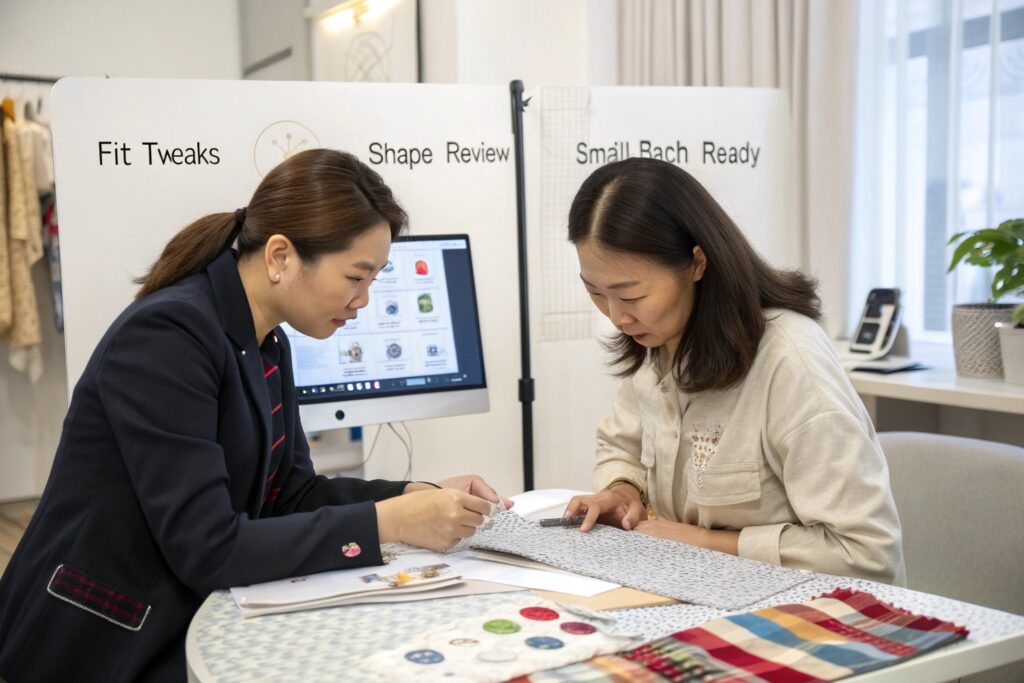
Services Offered by Supportive Factories
| Support Type | How It Helps Small Orders |
|---|---|
| Digital Mockups | Visualize the design without full samples |
| Free Material Swatches | Choose trims and fabric without big costs |
| Pantone Color Matching | Keeps brand identity consistent |
| Simple Tech Pack Templates | Lowers design barrier for first-timers |
| Sample Pack Trials | Try 3–5 styles before committing |
At AceAccessory, we use Figma previews, 2D mockups, and even AI-assisted design iterations to help boutique brands lock in their look before sampling.
We also provide template-based ordering, where brands choose from a semi-custom catalog and just apply their colors, trims, or logos—keeping cost and MOQ manageable.
Tips to Control Cost When Ordering Small Quantities
Just because you're ordering 200 instead of 2,000 doesn't mean your per-unit cost has to skyrocket. Strategic choices make a big difference.
To control cost on small quantity accessory orders, use in-stock materials, standard packaging, consolidate shipping, and simplify branding applications.
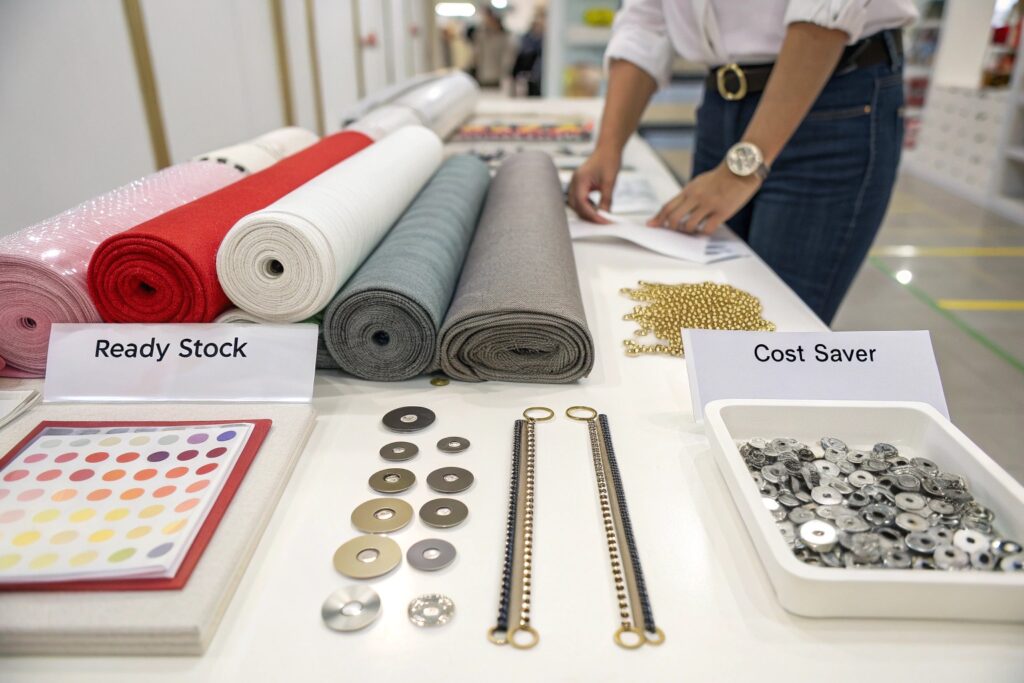
Top Cost-Saving Tips for Small Orders
| Tip | Savings Impact |
|---|---|
| Use factory stock materials | Avoid surcharge for special dyeing/weaving |
| Choose 1-color logo printing | Lower setup and unit cost |
| Opt for shared packaging | Reduces custom mold or design charges |
| Avoid rush orders | Express fees can be 3–4× normal freight |
| Combine orders with others | Share MOQ and reduce waste |
One example: a startup buyer requested recycled fabric headbands with custom pouches. By switching to stock recycled fabric and using a shared pouch design with a different client, we reduced their per-unit cost by 28%—while still hitting sustainability goals.
We also encourage small brands to use multi-product SKUs (e.g., 3-style packs) so they can meet MOQs across a collection instead of a single item.
Conclusion
Small batch accessory sourcing from China is not only possible—it’s thriving. With the right factory partner, boutique brands can get flexibility, customization, and quality that matches their vision. At AceAccessory, we specialize in making low-MOQ sourcing smart, affordable, and brand-ready.

